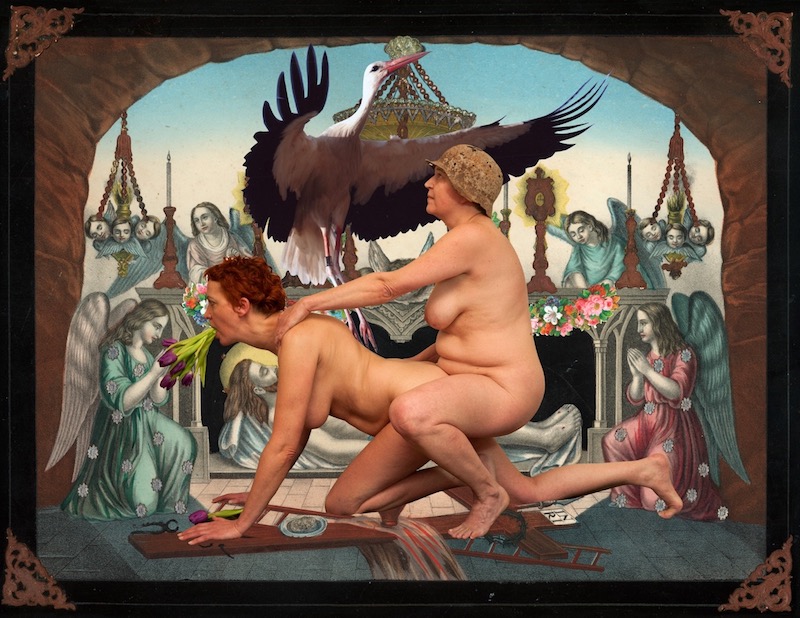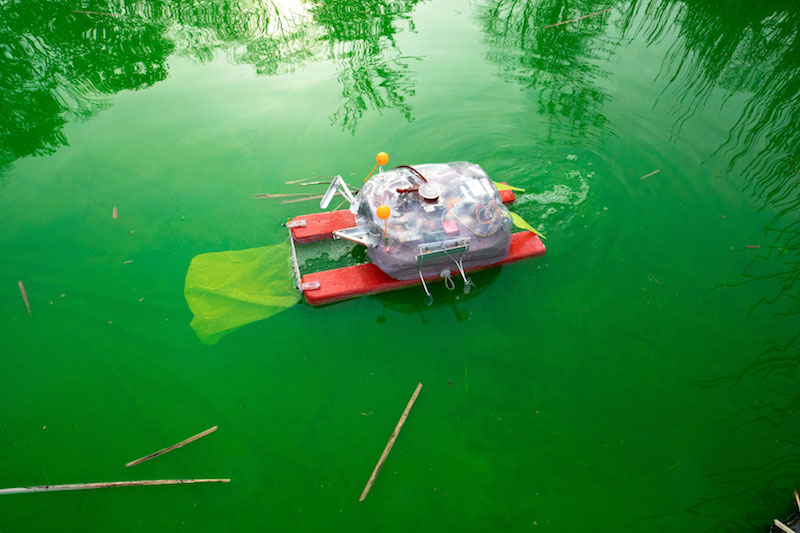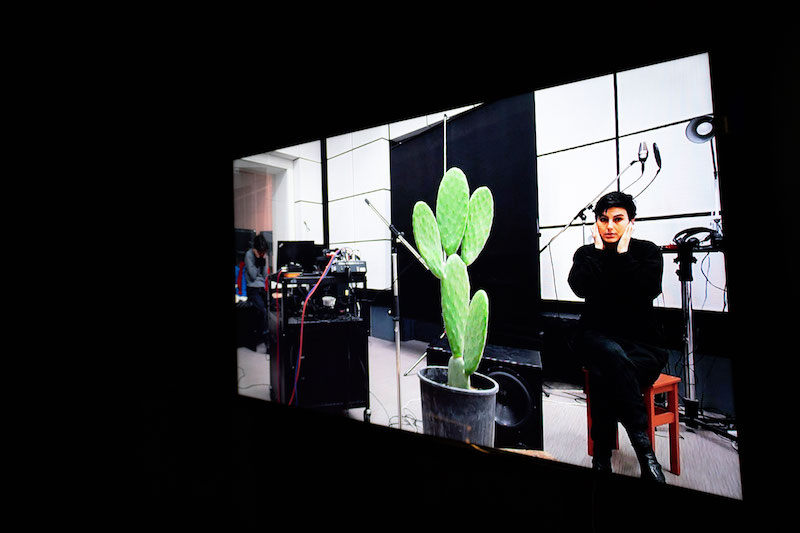by Noushin Afzali // May 25, 2021
Less than one kilometer away from Berlin’s largest city park, the Tempelhofer Feld, lies a hidden gem that attracts the city’s culture and nature lovers alike. Initiated as a temporary inner-city laboratory for collective and trans-disciplinary exchange by raumlabor in 2018, Floating University Berlin is a unique site that not only hosts outdoor exhibitions but also provides visitors with a distinctive connection to nature and the environment. What was originally designed as a rainwater retention basin to serve the Tempelhof airfield in the early 1930s has been transformed by local architects into an experiential learning space. Thanks to its unique landscape with its diverse range of animals, plants and algae, Floating University Berlin has since been welcoming visitors who are given the chance to participate in an interactive adventure, exploring and experiencing artworks and workshops in this unusual setting.
Currently on display is the exhibition entitled ‘Terrestrial Assemblage.’ Curated by Pauline Doutreluingne and Keumhwa Kim, the show brings together 10 international artists who are concerned with issues of environment, climate change and borders in their artistic oeuvres. As the title of the exhibition already reveals, it focuses on the relationship of humans to the earth (“terra”) and portrays this relationship by bringing together different media (“assemblage”). Through their artistic observations on the environment, the artists mirror social, biological and political border changes.
To enter the exhibition area, you have to first walk down a set of metal stairs. This will provide you with the chance of getting a glimpse of the vast site and familiarizing yourself with the surroundings. The place itself plays an integral role in shaping the emotional connection to the artworks. It serves as a peaceful haven that invites the participants to question and re-examine their own personal relationship to the environment. Several straw huts are spread over a wide expanse of land. To access the artworks, you have to either wade in the water or the mud, depending on the weather of the day. But you don’t have to worry about getting your shoes and clothes dirty: there are rubber boots on-site for visitors to use.

Ines Doujak: ‘Untitled’, 2014, digital print, banner // Courtesy of the artist
Descending the stairs to enter the exhibition area, two large paintings stand out. The first one is a digital collage by the Austrian feminist artist Ines Doujak (‘Untitled,’ 2014), which brims with near-mythological symbolism. Two naked women can be seen in the forefront of the picture. One, wearing a German Wehrmacht helmet, is riding the other, who is holding tulips in her mouth. Above them flies a stork, the symbol of fertility and new life. The tomb of Christ surrounded by angels can be seen in the background. By blurring the boundaries between animate and inanimate objects, past and present, Doujak’s collage portrays the intricate relationship between religion, capitalism and colonialism in the post-colonial era and attempts to deconstruct its sexist and racist stereotypes.

Anne Duk Hee Jordan: ‘Making Kin 2.1’, installation view, 2021, Floating University // Photo Si Wachsmann
At the far end of the exhibition’s space another colourful painting can be seen, which, in a similar manner, blurs and challenges the boundaries between nature, culture and technology. ‘Making Kin 2.1’ is a site-specific pond installation with living ecosystem, robotic crab and neon drawing by the Korean-German artist Anne Duk Hee Jordan, whose practice’s central themes are transience and transformation. In this multimedia installation, Duk Hee Jordan puts forward the ecological challenges of our time and examines the connections between ecosystems and human influence. The term itself is a borrowed phrase from Donna Haraway, the prominent American philosopher in the field of science and technology studies and pioneer cyborg feminist who calls for an interspecies symbiosis. The robotic crab named ‘Water Crab’ (2017-ongoing) belongs to her ‘Artificial Stupidity’ series that began in 2016 and consists of 9 installations so far. By constructing a future-oriented scenario in a humorous manner, ‘Artificial Stupidity’ is about allowing failure. Therefore, the robotic crab is not actually able to clean up all the human waste in the ocean, but mainly serves as a model.

Shira Wachsmann: ‘A Dream,’ installation view, 2021, Floating University Berlin // Photo by Si Wachsmann
On the opposite side of the vast exhibition area, Shira Wachsmann’s HD-video entitled ‘A Dream’ is a powerful and emotionally-charged piece. Wachsmann’s “dialogue” with a cactus—her voice and the ultrasonic waves from the plant—are recorded in the colours blue and red. ‘A Dream’ is Wachsmann’s personal account of how political ideologies construct and shape the concepts of “border” and “home.” Through her meticulous investigation of historical documents, Wachsmann’s artistic work focuses on notions of land and identity and exposes the political and historical ideologies that are behind constructing our identities today.
What conceptually connects these three works together is not simply their shared critical approach to natural and man-made borders, but also their interest in hybridity more generally, across species. By presenting alternative and provocative scenarios, the art pieces ask us to pause and reassess the political and geographical borders that define our existence, an act that will hopefully result in a more just and heterogeneous future community.
Exhibition Info
Floating University Berlin
Group Show: ‘Terrestrial Assemblage’
Exhibition: May 6 – June 6, 2021
terrestrialassemblage.com
Lilienthalstraße 32, 10965 Berlin, click here for map






















